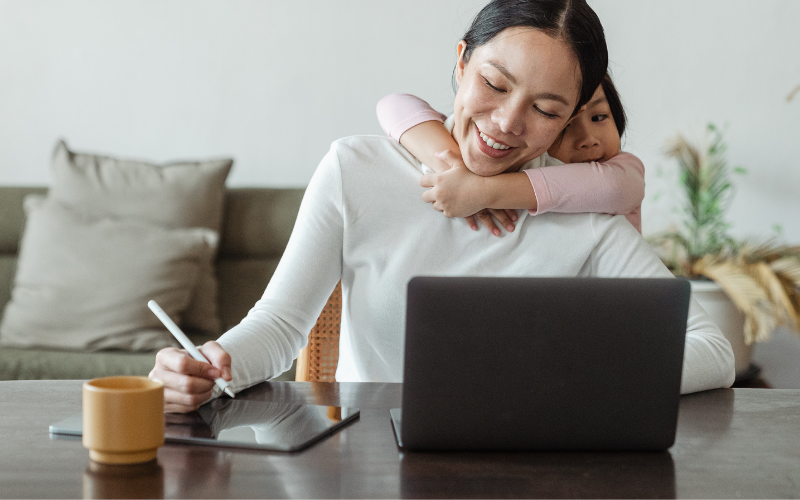How do I model good digital media and tech habits for my kids?
As the saying goes, actions speak louder than words. Drawing from what we know from research, this concept also applies to digital media use — what children observe their parents and siblings doing has a more substantial influence on them than being told what to do.
But today’s reality for most parents is that it can be challenging to model behaviors you want from your kids, especially if you work from home. That’s why an essential first step in becoming a good model is examining and modifying your own media use. Here are some thoughts on how to do this:
- Be honest with yourself about your own digital media use. The pandemic created a lot of not-so-great screen time habits for all of us, not just kids. Do you find yourself scrolling shopping sites while you’re talking on the phone? How about when you’re having a conversation with your spouse or child—do you glance at your tablet? Are you doom scrolling news sites on your phone when you could be at the gym? Being intentional about your screen use will make a big difference for both you and your child.
- Be aware of and try to mitigate Zoom fatigue. Zoom and other video chat programs have provided us with a more engaging way to conduct meetings when people are in different locations—but there are downsides. According to a study by the Stanford Virtual Human Interaction Lab, video chats wear us down. It’s good to set healthy habits during video conferences, like turning off the ability to see your own image, taking a break from your screen and just listening to audio, or changing the settings so only the speaker is visible. These boundaries will help you reduce fatigue and save more energy to engage with your kids post-work.
- Log off. Whether or not you work from home, choose a set time to log out of work devices and apps for the day so you can focus on your family, even if it means having to finish up after the kids have gone to bed.
- Turn off push notifications on your phone. Fewer notifications mean less temptation to pick up the phone while interacting with your kids.
- Put your phone on “do not disturb” during family (and you!) time. iPhones and Android phones have the ability to turn on “do not disturb” while allowing calls from select contacts (like a child who is out for the evening) to come through. Use this feature to eliminate interruptions during mealtimes, carpool drives, and any time you need a break.
- Enjoy non-digital activities in front of your kids. Read a book, garden, cook, knit, exercise, tinker around in the garage, have a friend over for a chat on the porch — you get the idea! Show your kids there are fun ways to occupy their time that don’t involve screens.
- Make good screen habits a family affair. Some ideas: Create shared media use agreements with each of your children; set up device-free family date nights (think picnic at a park or in the backyard, a meal at a favorite restaurant, or hanging out at the pool); and get everyone an alarm clock and set up a family charging zone, placing all devices there from one hour before bed to one hour after waking. Since we’re all in this together, ask other parents, especially those with children a little older than yours, what’s worked for them.
As a parent and a pediatrician, I can confidently say that when you show your kids you have self-control and mastery over your digital media use, they’ll take note.
Enjoy your media and use them wisely,
The Mediatrician®







